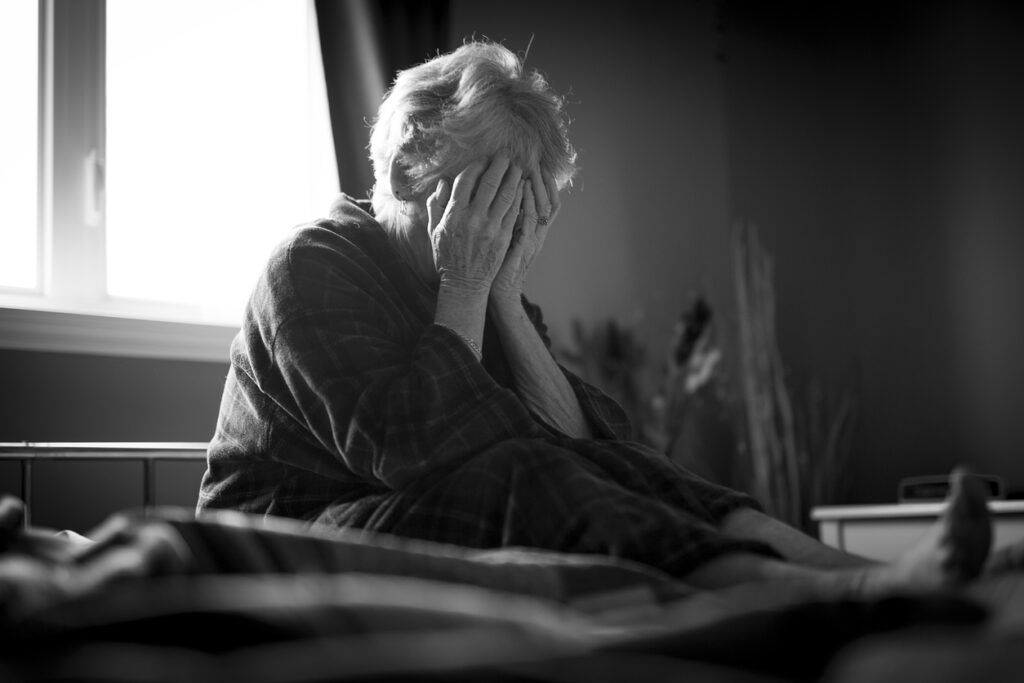Older Adults at Greatest Risk for Suicide

We mourn the loss this week of two cultural icons — Kate Spade and Anthony Bourdain — to apparent suicide. We’re sharing this article as a resource for Connect2Affect readers who may be struggling or know someone who is. Please remember that even if you feel alone, you aren’t. Help is out there.
If you or someone you know needs help, call 1-800-273-8255 for the National Suicide Prevention Lifeline or 1-800-971-0016 for the Institute on Aging’s Friendship Line. Both are free and available 24/7. You can also text HELLO to 741-741 for free, 24-hour support from the Crisis Text Line.
(This article appeared in Next Avenue)
Eastman Kodak founder George Eastman had accomplished much by the age of 77, having revolutionized photography and invented motion-picture film.
One day, he gathered together a group of friends to discuss how he planned to divide up his estate. After the meeting, he excused himself briefly and wrote them a note: “My work is done. Why wait?”
He then shot himself in the heart.
But before we conclude that Eastman was making a sober, well-considered decision to end his days, Kimberly Van Orden, says, consider this: “If you look a little bit closer at George Eastman’s life, we learn that he suffered severe back pain, functional impairment in terms of mobility, had restricted social interactions and likely experienced depression… Suicide is not an expected response to the challenges of aging.”
Suicide and Older Adults: More Common Than We Think
Van Orden, an assistant professor in the Department of Psychiatry at the University of Rochester School of Medicine, took part in a webinar last month on older-adult suicide prevention.
In 2013, people ages 45 to 64 had the highest suicide rate, according to figures from the U.S. Centers for Disease Control.
— Kimberly Van Orden,
University of Rochester
Many associate suicide with young people, like troubled teens or twentysomethings who never quite got their lives off the ground.
In fact, it is much more common among older adults. According to new figures just released this week from the U.S. Centers for Disease Control, the highest rate of suicides in America is among people age 45 to 64. There were more than 232,000 suicides in this age group from 1999 to 2016.
Other factors make suicide attempts more likely to be fatal among older people, Van Orden says.
“Older adults tend to die on their first attempt,” she says. Their frailty often makes them less likely to survive; their isolation makes them less likely to be rescued and “they tend to be more planful and determined in their suicidal behavior.”
Sounding the Alarm
The incidence of older adult suicide has not gone unnoticed by mental health professionals such as Van Orden. Yet they want to raise awareness of the problem among caregivers, family, friends and others who may be able to intervene.
When an older adult has one or more of the following risk factors, his or her loved ones should be especially cognizant of the danger of suicide, Van Orden says:
- Depression
- Prior suicide attempts
- Presence of other medical conditions
- Physical pain
- Social dependency or isolation
- Family discord or loss
- Inflexible or rigid personality
- Access to lethal means
One of the most important issues to confront is depression, she said. Health care providers should do routine screenings and, if depression is identified, get it treated.
“We know that depression treatment is effective,” at least in reducing thoughts of suicide and likely in reducing suicide itself, Van Orden says.
Acute Risk — The Most Dangerous Time
Warning signs of “acute risk” of suicide, Van Orden says, include:
- Threatening to hurt or kill herself or talking of wanting to kill herself
- Looking for ways to commit suicide by getting access to pills or weapons, for example
- Talking or writing about death or suicide when such actions are not typical
Toward Prevention
Fortunately, there are some “protective factors” that can reduce the risk of suicide, says Rosalyn Blogier, public health adviser with the Substance Abuse and Mental Health Services Administration. Blogier also took part in last month’s webinar, which was sponsored by the National Council on Aging. The protective factors include:
- Assessment and care for physical and mental health issues
- Social connectedness
- Sense of purpose or meaning
- Resilience during transitions
Those who work with older adults, including activity directors at senior living centers, have tried to educate residents by offering classes, but the tone of the approach made a difference, says Christine Miara of the Suicide Prevention Resource Center, who also joined the webinar. Stigma around mental health issues remains a very real problem.
“They found out that if they called it [the class] ‘Depression Awareness’ or ‘Reducing Suicide,’ they didn’t get many people to come, but when they gave it a title like, ‘Building Resilience’ or ‘Awakening to Joy’ or ‘No Regrets,’ the participation was much better,” she says.
By Emily Gurnon
Emily Gurnon is Senior Content Editor covering health and caregiving for Next Avenue. She previously spent 20 years as a newspaper reporter in the San Francisco Bay Area and St. Paul. Write to her at [email protected].@EmilyGurnon
If you or someone you know is in danger of taking their life, call the National Suicide Prevention Lifeline: 1-800-273-TALK. Outside of the U.S., please visit the International Association for Suicide Prevention for a database of resources.
